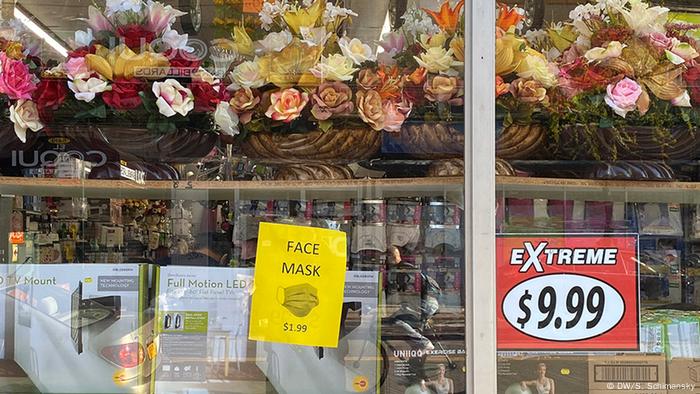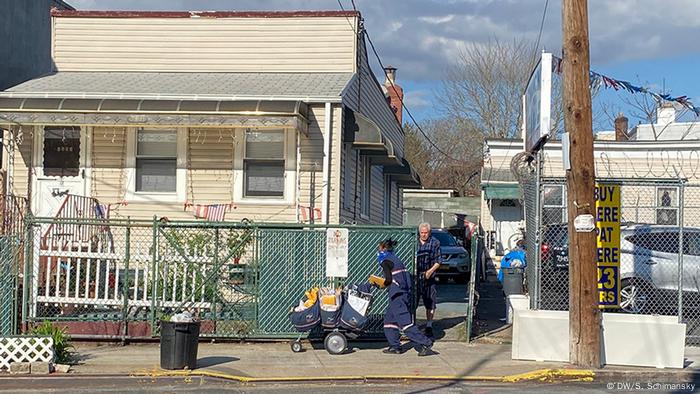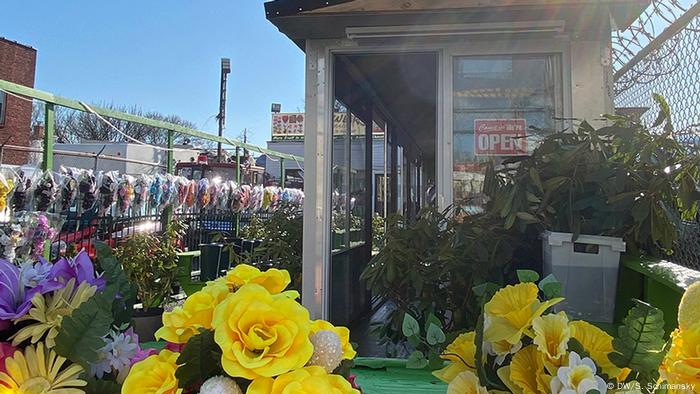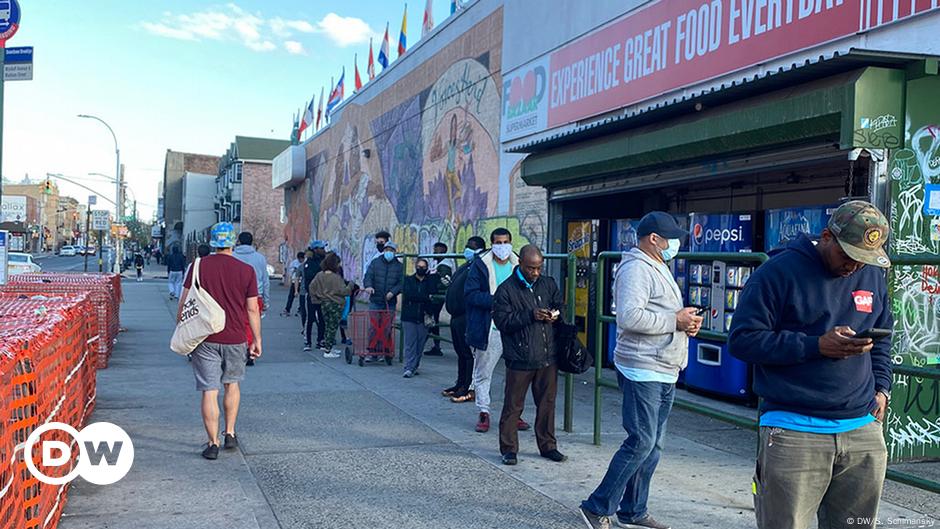The apocalypse is presented in bright sunshine in the New York borough of Queens. I take a walk once a day. Because currently it is a risk to leave the house. The infection rate in my neighborhood is one of the highest in all of New York City. I woke up to worried news from my friends and family in Germany, and the term “epicenter of the virus” was mentioned several times on the morning news.
When I leave the house, I expect chaos, at least burning garbage cans. But it’s calm and warm, the trees are in bloom and because there are fewer cars than usual, I can hear the birds singing. My neighbors have a barbecue in the front yard and play loud music. They share their apartment with three generations, so they take every opportunity to get out.
The photos of empty Times Square and deserted Fifth Avenue go around the world. But they are in Manhattan, and Manhattan is not representative of New York. Social distancing in the borough of Queens looks different. Here, too, there are empty streets and closed shutters, but life is still raging in some corners.
New York City is not just Manhattan
Around 1.6 million people live in Manhattan. In Brooklyn alone, at 2.5 million, there are significantly more, albeit over a larger area. Queens is also ahead of Manhattan with 2.2 million inhabitants, plus 1.9 million people in the Bronx and Staten Island. Demographics and standards of living vary widely across New York boroughs.
Some stores are boarded up like this one in Queens, New York – but not all
–
About 18 percent of New Yorkers live below the poverty line. The average for Manhattan is 16 percent. In the Bronx it’s 28 percent. In some neighborhoods, the proportion is even larger. In Brownsville, Brooklyn, 40 percent live below the poverty line. More than 70 percent of the residents there are African American. For comparison: On the affluent Upper East Side in Manhattan, the poverty rate is six percent, where 1.4 percent of the population are black and 75 percent are white.
Infection rates in the Bronx, Brooklyn and Queens are disproportionately higher than those in Manhattan. The epidemic is widening the gap between rich and poor. There are people on the New York subway who cannot afford to simply put their lives on hold for a few weeks. They often have no health insurance and jobs they cannot do from home.
In addition, skin color often determines who is poor and who is rich and, as a result, who stays healthy and who gets infected. The coronavirus disproportionately infects and kills African Americans in the United States, writes the New York Times, which shows data from several states and major cities.
Queens: Loud music and respirators
The fact that working from home is a luxury for whites and the wealthy can also be felt in Queens. The construction site on my street is in full swing five days a week. Even today, many people are out and about and shops are open.

Face masks and all sorts of odds and ends – the cheap shop
–
Loud music blares from a discount market on Cypress Avenue and neon lights flash in the shop windows. Actually, only supermarkets, drugstores and pharmacies are allowed to be open, but there are socks, umbrellas and other consumer goods here – and it’s full. “We have face masks” reads a sign at the entrance. An employee who is supposed to keep an eye on the number of customers is dancing there. I can see from the wrinkles in his eyes that he’s laughing under his respirator. Maybe he’s just glad he hasn’t lost his job like millions of other New Yorkers. There are so many that the website they use to apply for unemployment benefits keeps crashing.
I’m going to the grocery store to get a packet of coffee and fresh fruit when a girl approaches me and asks if I can get her and her sister’s two cheeseburgers at McDonalds next door. She is not wearing gloves or a face mask. I’ll buy her a respirator instead of cheeseburgers and give her cash. The idea of queuing at McDonalds is not very appealing.
The sun is now low and colorful flags flutter in the wind in front of a furniture store. If New York City weren’t hit by this virus, it would be a beautiful spring day. It’s warm and some of the people waiting in line outside the Liberty Department Store have their jackets tied around their waists. I’m sweating under my respirator. The queue in front of the department store stretches to the street corner. People seem to be wanting to buy a shelving unit or Bluetooth speaker right now.
On Cypress Avenue, individual shops are always open between many closed shops. Restaurants are still allowed to prepare food, either for pickup or delivery. Small pharmacies are open, with strict instructions that only one person is allowed in at a time. A pharmacist has holed up behind a plastic sheet. She still has enough breathing masks, she says when I ask.
The neighborhood will change forever
I walk past the little patisserie where I loved eating strawberry cake last summer and the café where I sometimes sit and write. Then there is the small hardware store where I get my pipe cleaner and the deli where I buy bagels and filter coffee in the morning. I fear that some of these shops will never open again – the economic damage is too great. This will cost jobs and bring even more poverty.

Communication in Corona times: Delivering letters from a safe distance
–
A postwoman pushes a trolley full of letters in front of her. An old man is waiting by a chain link fence. Even before she gives him his mail, he gives him a thumbs up. It’s like a little thank you. But maybe he just wants to tell her to keep the two meter safety distance.
A jogger without a respirator comes towards me. When she sees me, she pulls her scarf over her mouth and nose. I stop so she can walk past me at a safe distance. It touches me that we want to protect each other. in front of each other
A lot has changed in the district, in the whole city, since the outbreak of the corona pandemic – and a lot went wrong here before. I hope that we can do some things better when the curve of new infections flattens, when hospitals are no longer overcrowded and beds and ventilators are no longer scarce. When there are no more refrigerated trucks with corpses in front of hospitals.

Consolation despite the pandemic: The flower shop is open
–
The pandemic is exposing the catastrophic state of the healthcare system. Education needs to become more affordable so that more people can find better-paying jobs and get health insurance without being heavily indebted. In the words of New York Governor Andrew Cuomo, “This is a moment that will transform this nation.” And someone who also has to change them, it shoots through my head.
Before I want to turn into my street, I see that the flower shop is open. The florist asks if I don’t want to buy a bouquet. It seems absurd to me to spend money on roses now – but it is questionable whether the small shop with the plastic flowers at the entrance will still be around in a few months. I get a little nostalgic and buy a bouquet from him. I walk home with flowers in my arms and a respirator on my face.
–


